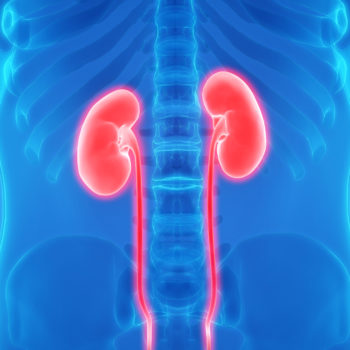Cryptorchidism, i.e. failure of the testicle to descend in the scrotal sack, is a frequent condition in male children. But what are the long-term consequences for sexual well being and human reproductive health? Dr. Luciano Negri, Assistant Andrologist of the Fertility Center at Humanitas, describes the relationship between cryptorchidism and male fertility.
First crucial months of life
The testicles are the male genital organs responsible for the production of seminal fluid and male hormones. They are located in the scrotum. The testicles descend in this sack when the child is still in the uterus, in the last phase of pregnancy, or immediately after birth. Usually, the descent of the testicles takes place within the ninth month of life.
The lack of descent of one or both testicles, more often the right one, can be a result of an anatomical cause such as, for example, the brevity of the spermatic cord. Cryptorchidism can be intra-abdominal or inguinal depending on the district in which the descent of the organ is interrupted (abdomen or groin).
Cryptorchidism is not reported with other symptoms except for the absence of testicle in the scrotal sack. Therefore, the observation of the infant with a physical exam or the use of instrumental tests is sufficient to diagnose this condition.
During the first year of life, the testicle will be able to descend on its own, while in other cases it will be necessary to use treatment: “The correction of cryptorchidism – adds Dr. Negri – is currently recommended within the second year of life, even better within the first year and a half. The ideal therapy for cryptorchidism is surgical (orchidopexy). The hormonal treatments are currently considered to be of reduced efficacy (Guidelines Siams – Italian Society of Andrology and Sexual Medicine, 2018)”.
Future risks
Up to forty-nine years of age, the most diagnosed tumor in men is testicular cancer. Neoplasia, associated with a favorable prognosis with more than 90% survival after five years of diagnosis, finds cryptorchidism a risk factor.
Apart from this, what are the other long-term risks for those affected by the testicles’ failure to descend? “Cryptorchidism – the specialist replies – is associated with an increased risk of hypofertility or sterility. 70-80% of subjects with bilateral cryptorchidism and 40-50% of subjects with monolateral cryptorchidism have an oligospermia or azoospermia (SIAMS Guideline, 2018)”.
The characteristics of failure to descent the testis are relevant factors for the relationship with fertility: “Abdominal and bilateral cryptorchidism, surgical intervention performed after two years of life and the concomitant presence of malformations of sperm channels are the most unfavorable conditions for the future fertility of the patient”.
Being affected by cryptorchidism may therefore be an important element over the years: “Often patients who are very young have a vague memory of the surgery or even don’t remember it. Performing the intervention during school years – continues the expert – can instead leave an unpleasant memory that involves an aversion to andrological and urological visits. In the vast majority of cases, the history of cryptorchidism emerges at a time of difficulty in conceiving. Fortunately, it emerges less frequently when testicular cancer is diagnosed. In general, parents should be informed that a seminal examination and scrotal ultrasound should be performed on their child once they reach maturity,” concludes Dr. Negri.










